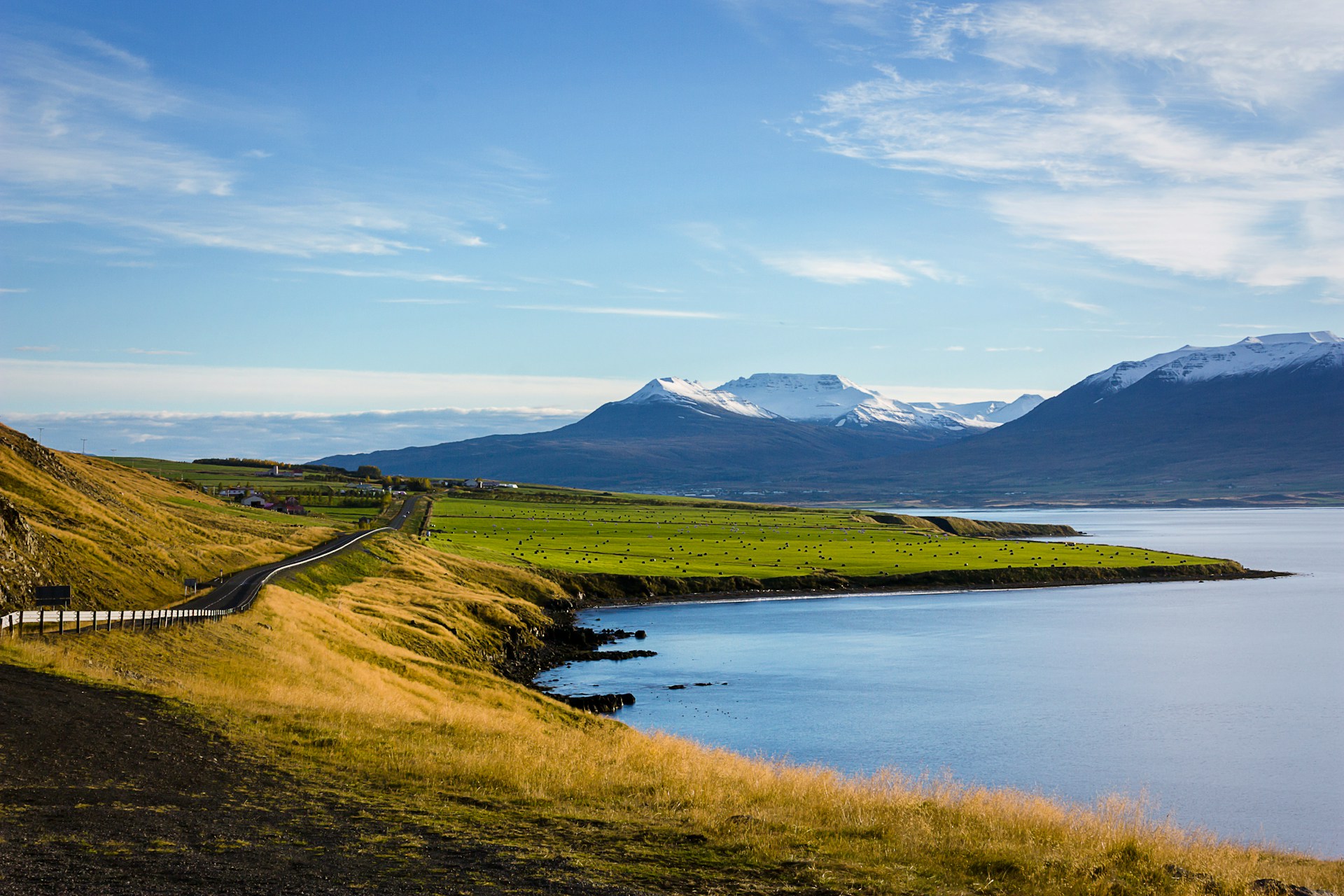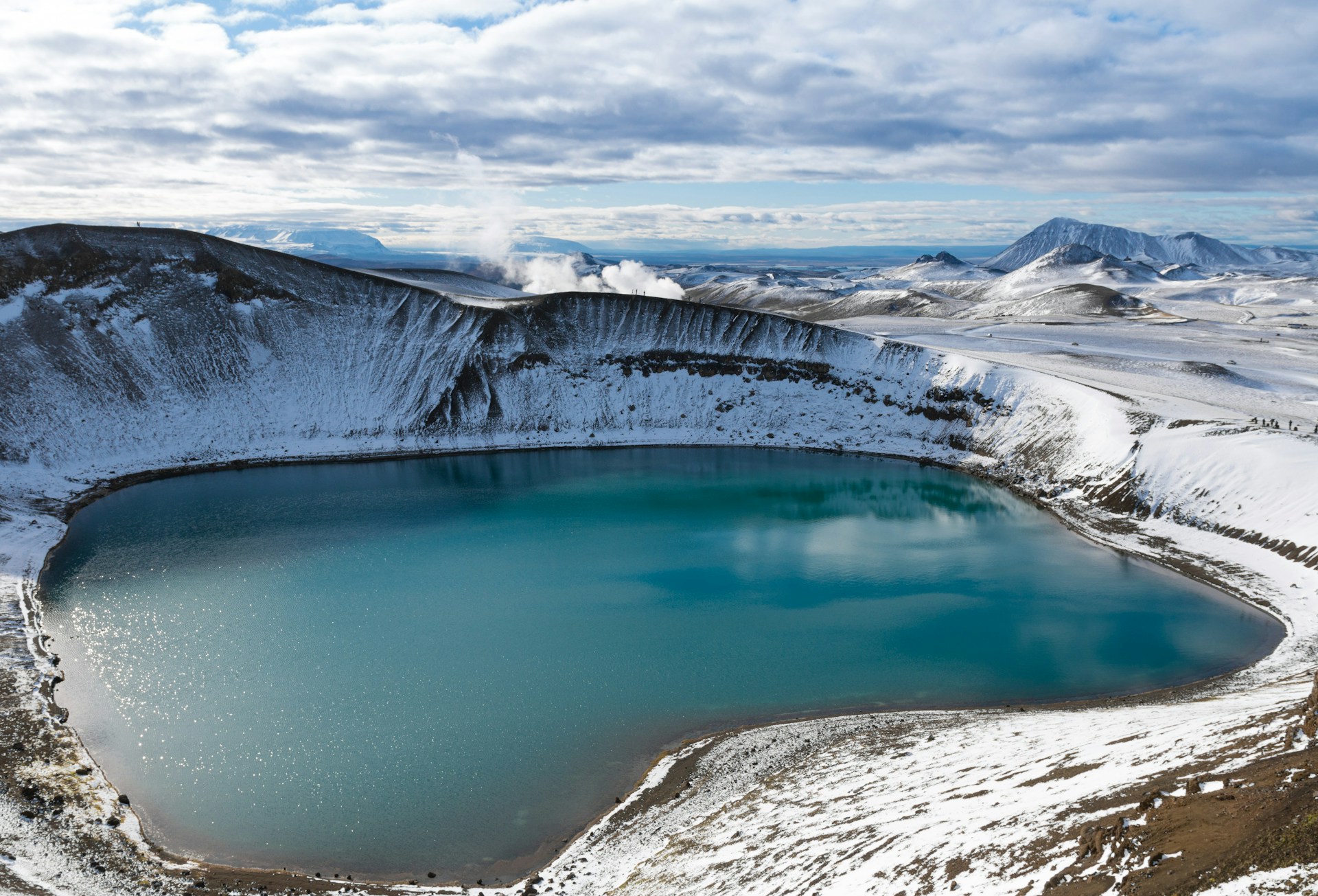After visiting Þingvellir National Park your next big stop along the Golden Circle Route is the Icelandic geysers. It is one of the most famous attractions in Iceland.

The Geysir field is located in the southern lowlands, towards the north, at an altitude of 105-120 m above sea level. Formerly known as Hverasandar, the hot springs can be found east of a small mountain called Laugafell.
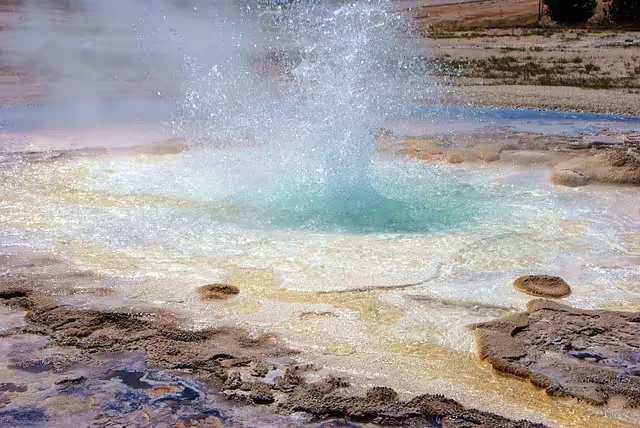
The Haukadalur geothermal field is located on the outskirts of a neovolcanic zone and is moving away from it, causing it to become a lower-temperature field over time. Geothermal activity is likely sustained by magma forcing its way out of the neovolcanic zone through fissures and forming intrusions. There is no indication of volcanism in the area in the past few thousand years, and the bedrock seems to have formed under a glacier towards the end of the glacial period.
It's estimated that the active geothermal field now covers around 3 square kilometers. The majority of the springs are arranged in a 100-meter-wide zone that runs in the same direction as the local tectonic lines, towards the south and southwest. This zone is 500 meters long and ends near the former location of the lords of Haukadalur.
Today, a church is located in the area. We can also find a layer of siliceous sinter, ranging from 20-150 cm in thickness, located closer to the ancient site than the hot springs. This layer is mostly covered by earth, although in some cases, it is visible, such as the mound at Hvitamelur. Hvitamelur was previously a spouting spring but is now dry. The ancient basin's rims are still visible, and numerous plant fossils can be found in the area.
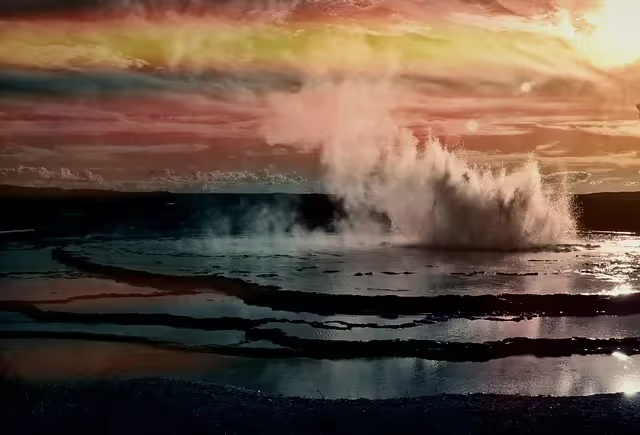
To clarify, it appears that hot spring water previously covered a large area that the geothermal field has since moved away from. The main part of the geysir geothermal field area is now located 2 km south of Haukadalur. However, two small springs, Marteinslaug and Gufubadshver, have remained in their original location. The oldest springs in the field, including Geysir, are believed to be located in the north.
THE GREAT GEYSIR
In Geysisgil, there is a 20 cm layer of earth covering an older layer of siliceous sinter to the northwest of Geysir. Interestingly, this same layer of earth can be found beneath the sinter at Geysir. This suggests that geothermal activity ceased for a period, allowing plants to grow until some event, potentially an earthquake, caused a fracture that allowed water to emerge again.

At a depth of 20 meters in Geysir's feeder channel, the temperature of the water is approximately 125 ºC. This water originates from a depth of 1-2 km and Geysir releases only 1.5 liters per second, while the entire area releases a total of 14 liters per second. Despite experiencing earthquakes that cause fractures in southern Iceland, there has been no reported damage to property in the north.
After a series of earthquakes, the Geysir springs become more active. The spouting springs, in particular, become more forceful and compete with each other. According to multiple sources, Geysir has been observed to spout at regular intervals of 6-8 hours after a seismic swarm.
Although there are no seismic fractures that lead to the Geysir field and no evidence that the still active geyser field has caused earthquakes, geologists predict that there will be another round of earthquakes in southern Iceland soon. This is based on the regular occurrence of such seismic events over the past several centuries.
There is a possibility that the Geysir field, which has been inactive for some time, might become active again soon. On the north side of a sloping area named Melar, located northwest of Geysir and above Blesi and Konungshver, there are three stones known as Konungasteinar. These stones bear the initials of Icelandic kings who have visited Geysir: Christian IX in 1874, Frederik VIII in 1907, and Christian X in 1921.
There is a footpath from Konungshver to a panorama disk located near the fence. Travelers are encouraged to examine the panorama disc as the view from there is fantastic. The geothermal park view is even more splendid from Laugafell. Climbing up the hill should not be too difficult for most individuals. Please note that Geysir is not the biggest or most impressive hot spring globally. Its reputation may stem from being discovered by Europeans earlier than the hot springs in the New World.
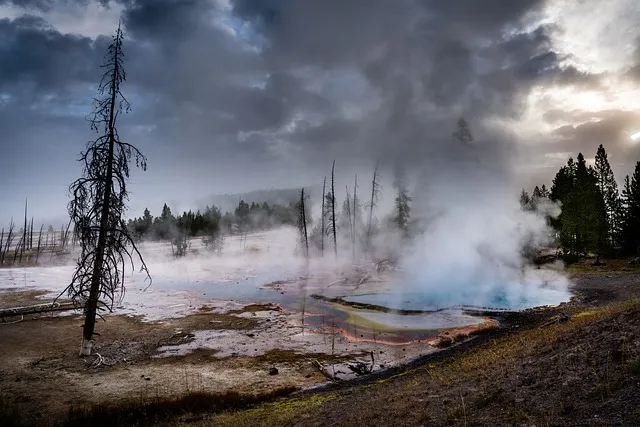
Yellowstone springs were preserved as a national park as soon as they were discovered in the 19th century. Geysir in Iceland is widely recognized as a remarkable natural phenomenon and has been featured in numerous travelogues. People from all over the world travel to Iceland to witness Geysir's water jets, which have been a point of pride for Icelanders for a long time. Geysir is often stimulated by earthquakes in southern Iceland.
However, over time, Geysir's aquifers have become encrusted, causing a decrease in flow at geysir center and an increase in the time between eruptions. According to William Morris's diary from 1871, Geysir typically only erupted once every five or six days, indicating a decline in activity. By 1895, Geysir was reluctant to erupt at all.
Geysir used to be erupting geysers about once every three weeks. However, after a major earthquake on September 10th, 1896, it started erupting once or even twice every day and reached greater heights than before. This continued for a while, but after two or three years, Geysir became less active again.

Geysir, a famous spouting spring, became very inactive after the year 1900. By 1916, it stopped spouting altogether. In 1935, a small trench was dug near the basin, which helped the spring to become active again for a few years. However, during the mid-1900s, the spring only spouted infrequently. Before 1980, Geysir was completely inactive for several years or even decades. It didn't matter that people tried pouring soap into it, which usually helps springs to spout. Geysir's lack of activity made it unimpressive during that time.
Fortunately, even though Geysir was not active at the time, there was still Strokkur nearby which was entertaining enough for most onlookers. Some visitors were anticipating another set of earthquakes to enliven Geysir. Then, in 1981, something occurred. The channel that had been formed on Geysir's edge was cleaned out and broadened to a depth of 70 cm and a width of 25 cm by removing the accumulated sinter. Geysir's reaction was immediate: as its water level decreased, the spring erupted and continued to do so nearly every day until the channel was concealed and obstructed in 1983. It's been reported that when geysir erupts, the water spouts reach up to 40-50 m high.
The furrow was dammed in a manner that allowed it to be reopened. Geysir's unpredictable behavior has always intrigued its fans because it always catches them off guard. In the mid-1900s, a group of individuals waited for 8 hours to witness an eruption after pouring soap into the spring. However, the spring remained still, and they eventually gave up and left. As soon as they were out of sight, Geysir erupted spectacularly.
A group of congress delegates arrived weeks later, with a determination to witness the spouting of Geysir no matter how long it took. They were given soap to clean themselves during their journey and reduce the delay. However, when they arrived, Geysir had already spouted and all they found was a fuming vent without any activity.
STROKKUR
Strokkur, also known as the churn, is an active spouting spring in Iceland that expels water and gas intermittently. Usually, it spouts to a height of less than 10-20 meters, but it can reach up to 40 meters. Although we know little about its age and history, it is believed that Strokkur was already active before an earthquake triggered it in 1789. The following year after it was set off, Strokkur released water, gas, and steam with a powerful force.

In the early 1900s, Strokkur erupted less often than before but with greater intensity than Geysir. While Geysir's jets reached 30 meters in height, Strokkur's reached 40 meters. However, by 1830, Strokkur had become significantly less active and rarely erupted on its own. To see it erupt, people had to throw stones and turf into the spring to encourage it.
Strokkur, a geyser, used to spout but only up to 20 meters high, and its water had a red color from the earth and turf. It subsided completely in 1896 after an earthquake, but in 1907, it got a bit better. Unfortunately, it never returned to its previous spectacular state and died again by 1920. In 1963, the Geysir committee recommended drilling a 40-meter-deep hole from the bottom of its basin. Since then, Strokkur has been spouting or squirting merrily, with a discharge of 2.5 liters per second from the borehole.
BLESI
Blesi, located west of Geysir and at a higher elevation, was known for spouting water up to one meter high in the past, but it is currently inactive. Historical diaries mention a brook originating from Blesi, which travelers used for bathing and washing clothes. Today, there is hardly any brook running from Blesi, despite the spring discharging 1 liter per second.

Blesi is made up of two big basins that are separated by an area of land called the 'blaze'. In the southern basin, there is extremely clear, boiling hot water that is colorless, making it appear dry on calm days. The water from this basin flows over to the northern basin, which is blue in color and only 1 meter deep. Unlike the southern basin, the northern basin doesn't have its own source, so the water temperature there is fairly cold, approximately 40 °C.
Dissolved silica causes the azure blue color seen in places like Bláhver at Hveravellir. The silica in the southern spring is already dissolved when the water emerges, but only reacts with the atmosphere later. "Blaze" can be imagined to have one blue eye surrounded by siliceous sinter. The "blue eye" is a comfortable and constant temperature throughout and offers a bathing opportunity.
From an environmental perspective, it's best for people to avoid bathing in this area. Just south of Blesi, there is a body of water called Fata that looks somewhat like a pail. The water level in Fata can vary, and sometimes it even spouts. Adding soap can cause it to spout more impressively. Recently, people have started waiting for Geysir while also enjoying Fata's spouting.
FATA
Fata is a small but hot water source that is filled with water from Blesi a few hours before it starts spouting. Once the basin is almost full, the flow of water is stopped and left to heat for one hour. When the water reaches boiling point, soap is added, and you can expect to see impressive results very soon.
Occasionally, there might be only a few hours of delay before the soap starts to churn vigorously and boil explosively, causing it to spout for an extraordinary amount of time. During this process, the jets of soap slant towards the direction of Strokkur.
KONUNGSHVER
The Royal Spring, called Konungshver, is located slightly northwest and uphill from Blesi. You can find it at the lower end of the footpath that leads to the panorama disc. Konungshver is one of the northernmost springs in the Geysir field, alongside Geysir. Its name dates back to 1874 when King Christian IX visited Geysir.
The Konungshver spring cannot spout because it is filled with boulders that are easily visible. However, it still makes some noise occasionally. If someone had the right tools, they could remove the stones and see what Konungshver is capable of. Litli-Geysir, located south of Strokkur, has not erupted recently but in 1871, William Morris described it differently.
SEIDIR, LITLI-GEYSIR AND OÞERRISHOLA
Seidir is located near Litli-Geysir which used to be one of the main springs in the area. Although it has cooled down now, it could still spout a few meters with soap until recently. Oþerrishola, located slightly west of Litli-Geysir, is known for its meteorological capabilities. It can predict rainfall by squirting water when the atmospheric pressure drops, indicating the weather pattern after the depression.
ÞYKKUHVERIR, SMIDUR AND SODI
To the south, a bit west of the entrance to the area, you will find the Þykkuhverir hot springs, which release 4 liters of water per second. One of the first several new hot springs here, known as Smidur (the smith), is quite beautiful, with swirling water in a sinter basin. If you add a small amount of soap to the water, Smidur will spray water into the air for a brief period (3-7 meters high) after just a few minutes. You only need two liters of soap solution to create this effect.
It's not useful to apply soap to the spring more than once a day as it takes a while to settle down. There's a small spring just below Smidur that doesn't have a name and it sprays water violently when soap is applied. However, this only lasts for a brief moment before the spring's water supply is replenished in a few minutes, and it sprays water out again.
The aforementioned cycle continues for almost an hour until the spring eventually calms down. In a location slightly to the south, there is a geyser named Sodi who, to the best of our knowledge, first erupted in 1940. If soap is poured into Sodi's water, the spout can reach a height of 20 meters. However, it is necessary to divert the cold streams that flow into Sodi and a significant amount of soap is required.
Sisjodandi is one of the springs located towards the west in the Þykkuhverir area. The spring boils aggressively, as suggested by its name, but is unable to spout due to the presence of a cliff nearby. In the past, locals used to wash their clothes there as well, but had to be cautious as soaking clothes for too long would cause damage from the silica present in the spring. This continued until the mid-20th century.
LOCATION
GPS 64.3104° N, 20.3024° W
The Golden Circle tour includes a visit to the geothermally very active geothermal area of Haukadalur valley where you can find the famous Geysir and Strokkur. These geysers are located on route 35 and are easily accessible. You can visit the Geysir Hot Spring area any time of the year.
If you take route 36 (also known as Þingvallavegur), you will travel approximately 100 km (62 mi) from Reykjavik to reach Haukadalur valley. Along the way, you will drive through Mosfellsdalur valley and past Thingvellir National Park. After a short time, route 36 turns into road 365, which eventually becomes route 37 as you pass by Lake Laugarvatn.

You can reach the Geysir area by taking the Ring Road, also known as route 1. People often take this same road back. While on the Ring Road, you will pass by Hveragerði town. Before Selfoss town, take a left turn towards Laugarvatn Lake. This route takes you past the Kerið Volcanic Crater, Skálholt historical site, and Faxi waterfall. Continue following road 35 to reach the other geysers again.
You will know you have arrived when you see rising steam, possibly indicating an ongoing eruption, and detect the smell of sulfur.
HISTORY OF GEYSIR AND STROKKUR
GEYSIR
The geyser known as Geysir has been around for approximately 10,000 years, despite being the first geyser mentioned in the 18th century.
As early as 1294, historical writings referenced Haukadalur valley and the Great Geysir. It was after a tremendous earthquake in Iceland's southern lowlands that year that many of the hot springs in the region were formed.

To understand what a geyser is, you can look to Iceland's volcanic activity. The Great Geysir got its name from the Icelandic word "geysa," which means "to gush." This geyser was the first of its kind known to Europeans and described in writing, which is why the English word "geyser" comes from the Icelandic term "Geysir."
Geysir has the ability to shoot water up to a height of 70 meters (230 ft) into the air. The water that feeds Geysir reaches the boiling point about 20 m (3.2 ft) below, and can be as hot as 125 ºC.
HOW OFTEN DOES GEYSIR GO OFF?
The activity of Geysir has varied over time, but the most intense bursts usually occur during and after earthquakes and volcanic eruptions. The tallest eruption ever recorded happened in 1845 and reached a height of 170 meters (557 ft).
Many powerful eruptions were produced when the hot spring was triggered by earthquakes in both 1896 and 1630.

Geysir's eruptions became less frequent in 1935 because silica had blocked its channel. However, in 1981 the channel was cleared and sometimes the eruptions were artificially created by adding soap. Fortunately, this practice was later discouraged.
The earthquake in 2000 caused the Geysir to become active again. It erupted continuously for 2 days, reaching a height of 122 meters (400 ft). In February 2016, the Geysir surprised some fortunate visitors with another sudden eruption.
Geysir is currently dormant, but it has a history of unpredictable activity. It is possible to witness Geysir geyser erupts again, but it's difficult to determine when it will happen. Even a small earthquake can trigger the geyser to become active.
Be cautious of Geysir's unpredictable nature. At any moment, you may witness the explosive eruption exploding geysers at its maximum intensity.
STROKKUR GEYSER
Strokkur, located 100 meters south of the Great Geysir in the Haukadalur valley, is now the most famous geyser in Iceland. It erupts every few minutes with boiling water shooting up to 20-40 meters (65-130 feet) high. Its spectacular show makes it a must-see attraction.

You don't need to worry about missing the eruption at Strokkur because its displays occur regularly every 4-10 minutes. So, have your camera ready and enjoy the steamy bursts!
According to the information, "Strokkur" is the Icelandic word for "the churn." "Strokkur" and "Geysir" are both the same age, but "Strokkur" was first mentioned in 1789 after an earthquake resulted in its activation.
Initially, the geyser displayed immense strength by forcefully spewing out gas, water, and steam. Historical records indicate that Strokkur's eruptions were more impressive than Geysir's, with heights of up to 60 meters (196.8 feet) as far back as 1815.
In 1830, the Strokkur geyser became less active, causing people to attempt to trigger eruptions by throwing stones and turf into it. However, this method was not very successful or safe, since the geyser only spouted up to 20 meters (65 feet) and the objects thrown in would be pushed out. Additionally, the water column would turn a rusty red color due to the ground and turf.
In the 20th century, there was another earthquake that blocked the conduit for Strokkur. However, in 1963, the locals cleaned out the channel once again. Since then, Strokkur has been regularly launching its boiling rockets into the sky.
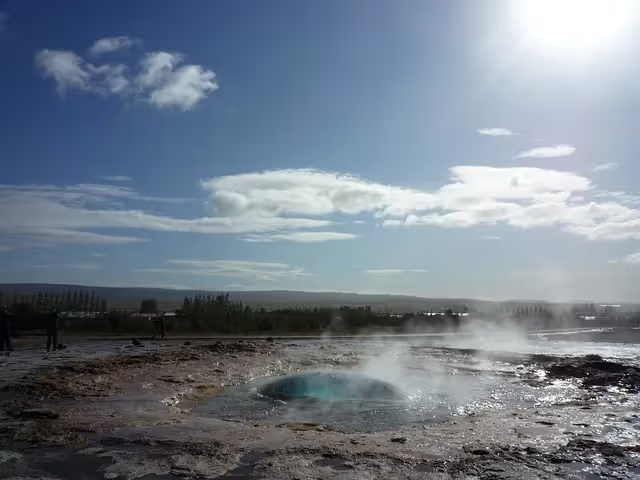
While Strokkur's sizzling pool is quite a remarkable view, be cautious of its magma-warmed water. At just one meter (3.2 feet) down, the temperature is around 90-95°C. The water is heated to 112°C at a depth of 10 meters (32 feet), and at 23 meters deep, the temperature rises to about 130°C.
As a result of this underground plumbing system, ground water comes into contact with hot bedrock and heats up, building pressure. When the water has reached peak temperature and pressure it sprouts out from the geyser and into the air.
Prior to Strokkur's eruption, you may observe the water beginning to boil and move, accompanied by the release of dense steam. Right before it erupts, the water will briefly sink into the pool and then burst out forcefully, scattering hot droplets around.
Be sure to set up your camera to capture the quick moment when scalding water explodes from the Earth into the Icelandic air!
WHEN TO VISIT GEYSIR GEOTHERMAL AREA?

The Geysir Geothermal Area is open throughout the year, and a lot of tourists like watching the geyser eruptions during winters. The combination of extremely low temperatures in South Iceland during winters and the eruption of boiling-hot water creates a mesmerizing spectacle. The collision between the extremely hot still water and cold air results in a thick steam cloud, adding to the already impressive boiling explosions.
INTERESTING PLACES NEAR GEYSIR AND STROKKUR
- Gullfoss Waterfall
- Thingvellir National Park
- Silfra Fissure
- Haukadalur Church
- Bjarnarfell mountain
- The Secret Lagoon
- Flúðir village
- Reykholt village
- Skáltholt Churches
- Friðheimar Tomato and Horse Farm
- Faxi waterfall
- Efstidalur Farm
- Drumbó River Rafting Base
- Laugavatn and Fontana Spa
- Kerið Volcanic Crater
- Sólheimar Eco Village
- Brúarfoss Waterfall
Geysir Geothermal Area Opening Hours
Geysir Geothermal Area is accessible 24/7.
Basic Cost Of Visiting Geysir Geothermal Area
Here is a breakdown.
Traveling Cost
The cost of traveling to Geysir Geothermal Area depends on how you are traveling. If you are driving in your car, only the fuel cost will incur.
However, if you are opting for a tour service, it depends on the package. We suggest choosing an affordable package from the range of tours by Golden Circle Day Tours.
Entrance Fee
There is no entrance fee for the Geysir Geothermal Area.
Parking Fee
Access to the Geysir Geothermal Area's parking lot is completely free of charge.
Let us save you time. Golden Circle Day Tours offers a variety of Golden Circle Tours.
Affordable & Adventurous Golden Circle Day Tours
Each tour comes with its own mix of adventurous activities.

Here are two guided Golden Circle tours.
1- Classic Golden Circle Tour Iceland (ISK8990 Per Person)
Simply book your tour and leave the rest to Golden Circle Day Tours!


%20(1)%20(5).webp)

